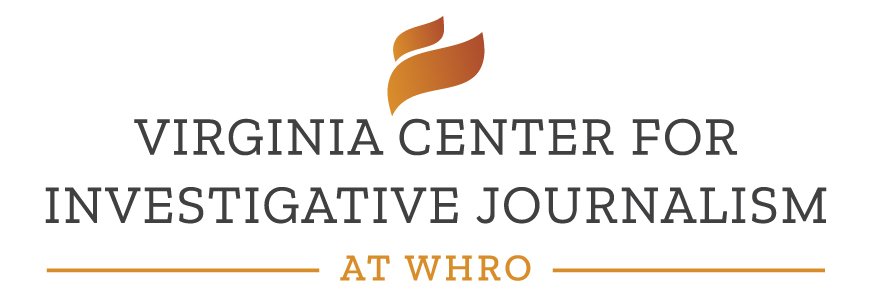Ken Mallory reviewed ballots in a historically close Newport News election. One vote made all the difference.
Democracy at Work is an election-season series from VCIJ at WHRO. People share stories about how they upheld the core ideals of American democracy.
By Louis Hansen
Photography by Christopher Tyree
Virginia Center for Investigative Journalism at WHRO
Dozens of journalists and partisans gathered in a Richmond conference room in early January, 2018 to watch the chairman of the Virginia Board of Elections reach into a ceramic bowl. He grabbed one of two canisters, opened its lid and pulled out a slip of paper.
“David Yancey,” he announced. The drawing broke the tie in the 94th House District race between Democrat Shelly Simonds and Republican incumbent Yancey, tilting control of the House of Delegates to the GOP.
The historic lottery ended a fierce, $1.2 million campaign for the Newport News seat and curbed the power of newly elected Democratic Gov. Ralph Northam.
Miles away in Newport News, Ken Mallory sat alone and watched the spectacle on TV. Few knew what he had done - that the balance of power in the commonwealth had rested on the nagging conscience of a $170-a-day poll worker.
“When it came to that recount, and it came to that one particular ballot,” Mallory said, “I will freely admit that I messed up.”
Virginia’s off-year elections create a heavy demand for thousands of poll workers. Two-thirds of voter registrars in the state reported having only one or no employees in their office. Civic-minded volunteers, often paid a small stipend for duties that can stretch from pre-dawn to late- night, make Election Day happen.
Mallory, like many, applied to become a poll worker as a community service. He was a junior high school civics teacher in Newport News, an Eagle Scout and Virginia Tech graduate who also advanced through the Corps of Cadets civilian leadership program.
“Being a poll worker,” he said, “you still get that ability to participate in democracy, but now you're getting to help people.”
In the November 2017 election between Simonds and Yancey, Mallory served as precinct chief at Saunders Elementary School in Newport News. It was a busy day, with strong turnout in the hotly contested state races.
Results trickled in through the evening. By morning, the official count had Yancey ahead by less than 20 votes. State law required a recount. The Newport News voter registrar asked Mallory to be one of a handful of experienced poll workers reviewing contested ballots.
Sure, he said.
Mallory, 40, grew up in York County, and now lives outside of Roanoke with his wife and daughter. He serves as director for the Citizen-Leader Track of the Corps of Cadets at Virginia Tech. He teaches new cadets about the importance of honor and integrity.
In December 2017, Mallory reviewed the Yancey-Simonds ballots that were kicked out of the scanning machines because the intent of the voter was unclear. For example, instead of filling in the dot next to a candidate’s name, some voters marked an “X” near their choice, or they selected both the Democratic and Republican candidates, or they scratched off a name or just scribbled across the form.
Mallory and a fellow poll worker reviewed dozens of ballots as lawyers and journalists lined the walls of the recount room.
The ballot that Mallory contested.
Almost all were easy calls. But Mallory and his colleague disagreed over one ballot marked straight down the Republican ticket, except for votes for both Simonds and Yancey. Simonds oval, though, was crossed out.
They discussed whether to count the ballot or not for about 30- seconds. The lawyers watched and listened.
“I was like, ‘Hey, Republican vote here’,” Mallory said. “My counterpart said, ‘No, you can't say that because he didn't actually fill in the ballot. We don't know what this voter’s intent was.’”
The ballot went into the uncounted pile. Mallory heard a quarrel between lawyers over his shoulder.
At the end of the recount that day, the electoral board announced its decision - Simonds won by one vote, 11,608 to 11,607. “My thought immediately flashed back to that one ballot that we'd argued about,” Mallory said.
He recalled the detailed instructions they’d been given – if two poll workers disagreed, the ballot should go to the circuit court, and judges would make the call.
“It was not for us to decide,” he said.
That night, he went to his computer and wrote up his notes about the disputed ballot. As he finished, a lawyer for Yancey called. After a few more phone calls to make sure he was allowed to talk, Mallory agreed to give his statement to the attorney.
The next morning, the lawyer met him in the school parking lot and collected the statement. A few hours later, in court, a panel of judges agreed the uncounted vote should go to Yancey.
A tie.
Mallory said he had no partisan interest in the results. “At the end of the day,” he said, “I gave the institution enough information for our process to be able to work.”
“We accept in this society that sometimes – and more often than not in a lot of cases – the choice of the people is not necessarily your choice,” he said. “But the choice of the people is a fair choice. And when I was a poll worker, that's something that I always strove for.”
“You know, that sounds kind of cheap and cheesy, but in my case, it's absolutely, 100% true.”
Reach Louis Hansen at louis.hansen@vcij.org.



